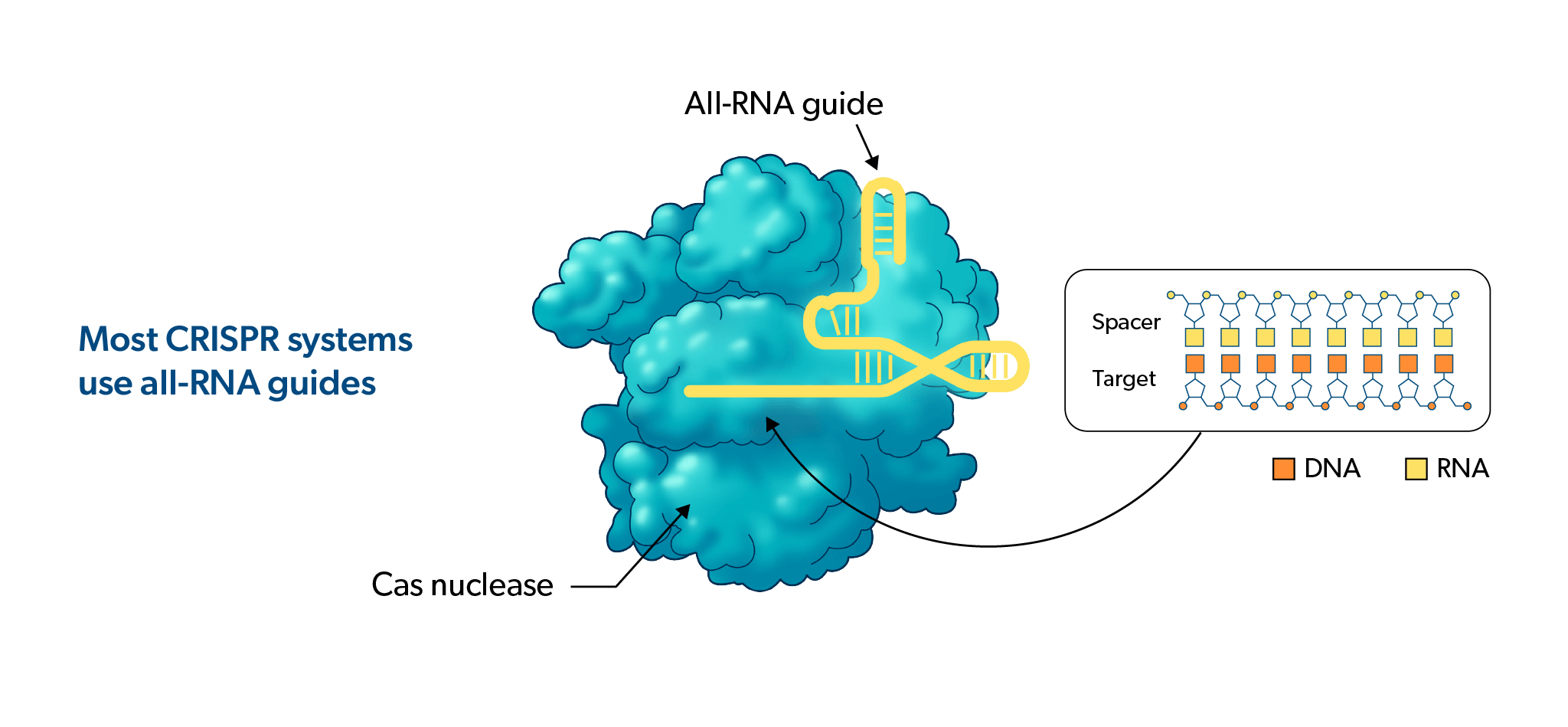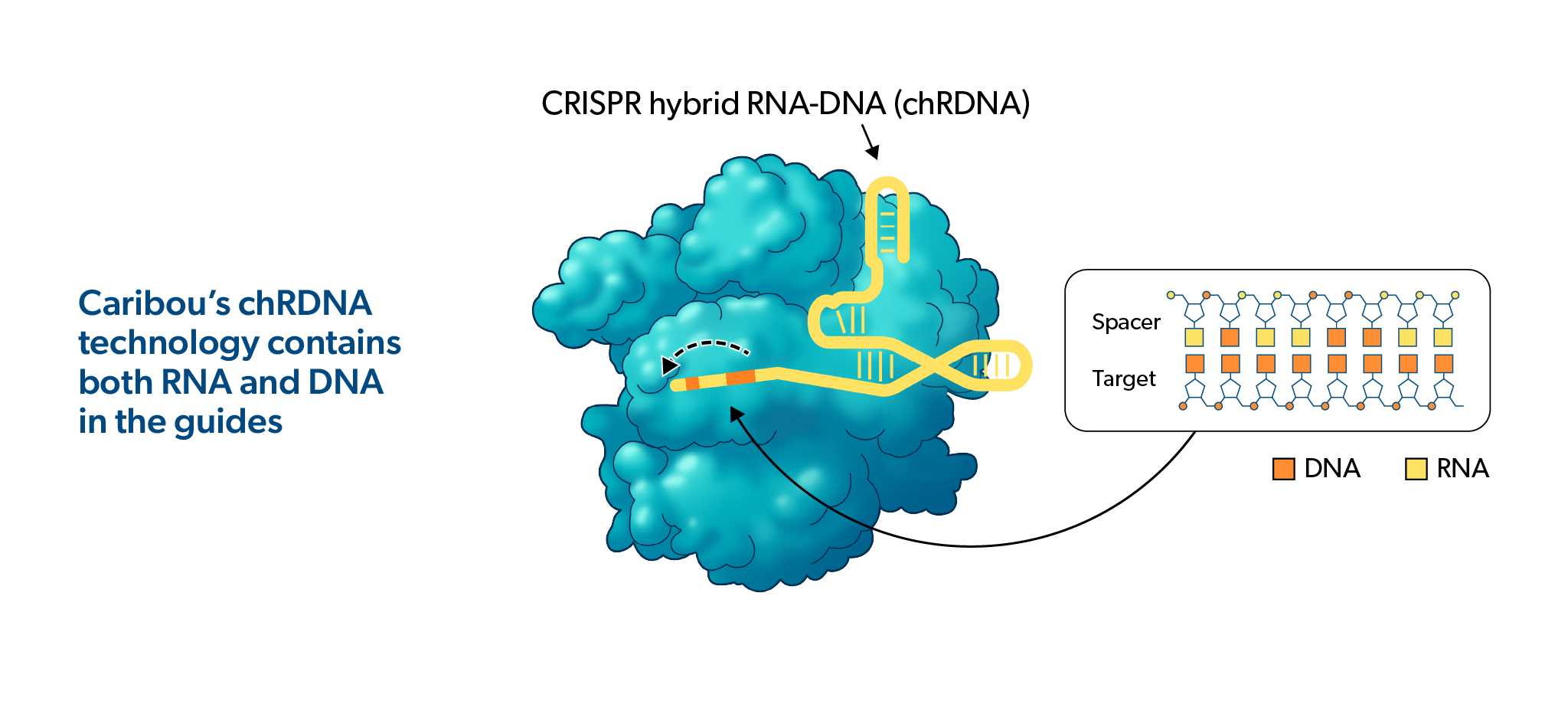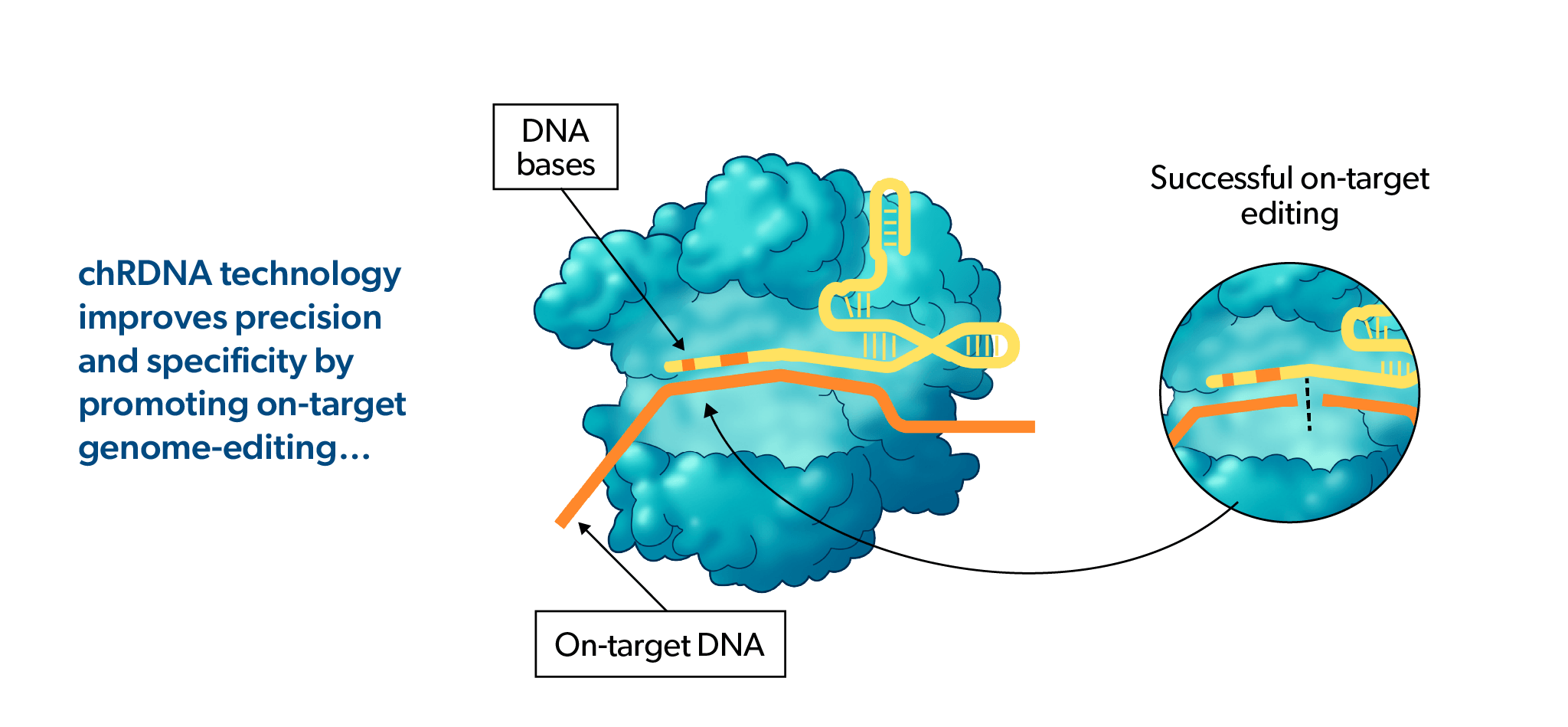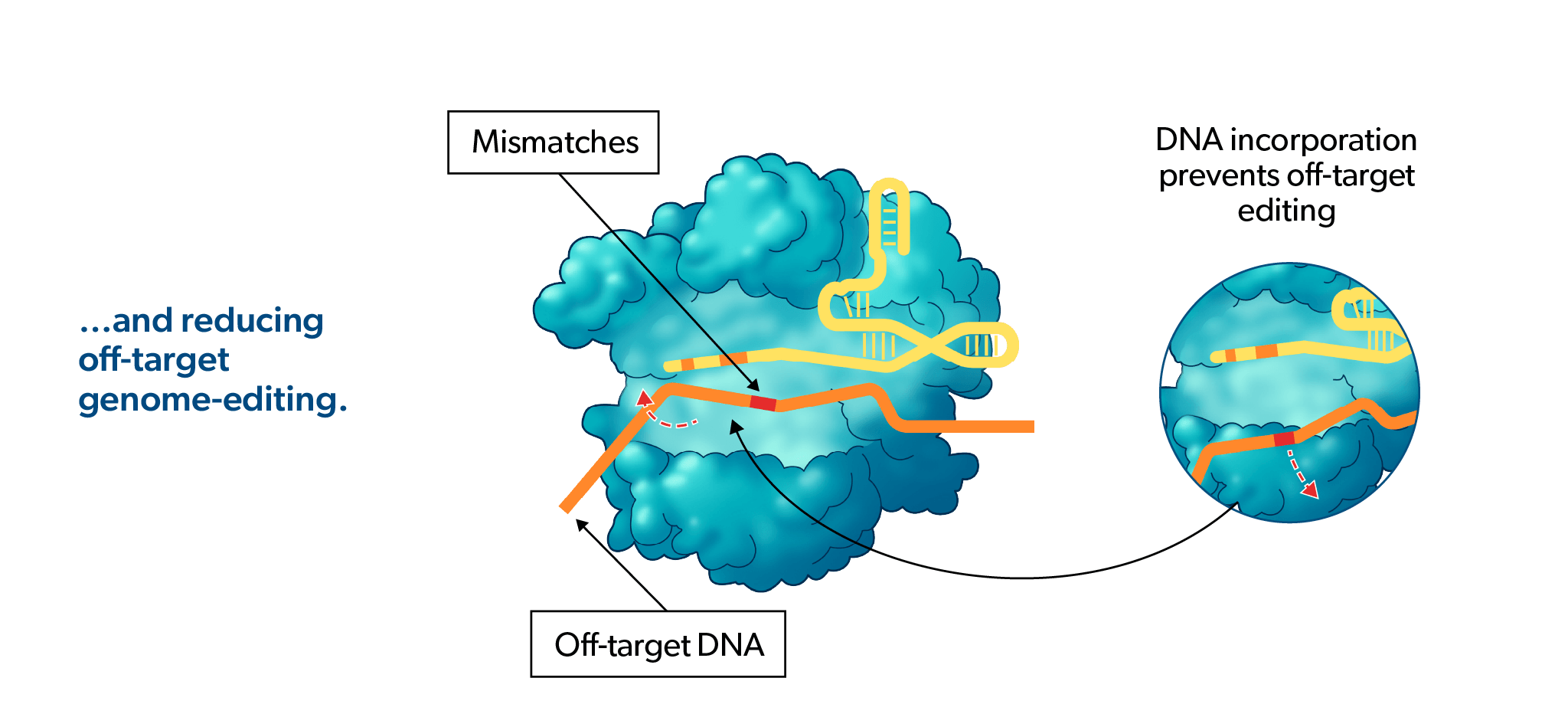
Specificity
Fewer off-target events versus first-generation CRISPR

Efficiency
Multiplexed editing with high genomic integrity and high insertion rates

Versatility
Utility across a multitude of cell types and applications

Simplicity
Guides manufactured via chemical synthesis
Next-generation CRISPR technology
Since the invention of CRISPR-mediated genome editing, a key bottleneck to a broader use of first-generation CRISPR in therapeutics has been specificity. Caribou scientists took on the challenge to improve CRISPR genome-editing precision and invented our chRDNA (CRISPR hybrid RNA-DNA, pronounced "chardonnay") genome-editing technology. By designing CRISPR guides with both RNA and DNA, we can significantly improve the precision of genome edits.
Improved specificity is achieved through greatly reduced affinity of the chRDNA guide to off-target sequences. Mismatches between off-target sites and the chRDNA guide significantly reduces stable binding of the Cas complex and therefore impair cutting by the Cas nuclease. The chRDNA technology therefore results in a significant reduction in off-target editing.





